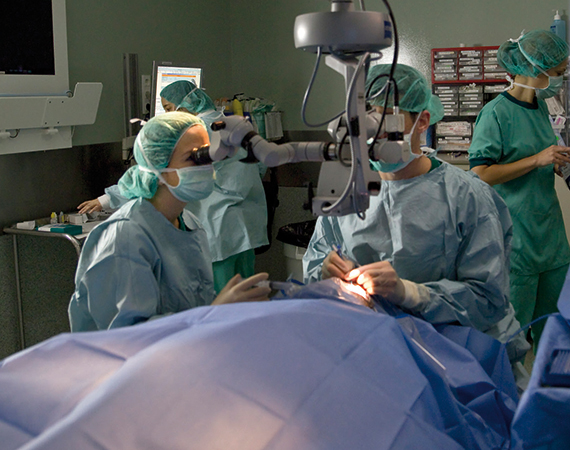The most frequent indication for performing a corneal transplant is decreased visual acuity as a consequence of corneal opacity. Other objectives include correcting an abnormal corneal contour (keratoconus), treating corneal thinning or perforation, relieving pain, removing infectious or neoplastic foci, and addressing cosmetic problems.
The classic corneal transplant procedure replaces the entire thickness of the host’s central corneal disc with the cornea from a donor eye. This is known as penetrating keratoplasty.
The current trend is to perform partial transplants, involving only certain layers of the cornea depending on the location of the pathology. Thus, anterior lamellar keratoplasties (DALK) and posterior lamellar keratoplasties (DSEK, DSAEK, DMEK) are distinguished.
At the Institut de la Màcula we perform the most appropriate corneal transplant depending on the location of the corneal pathology.
Postoperative care following a corneal transplant is much more complex than after cataract surgery. The long-term success of a keratoplasty partly depends on postoperative care and treatment due to the risk of rejection, although this risk is lower than in any other systemic transplant.


